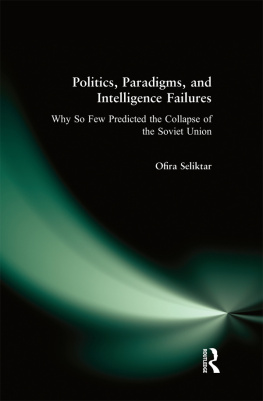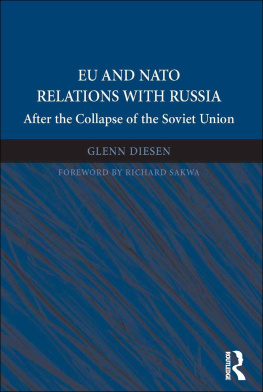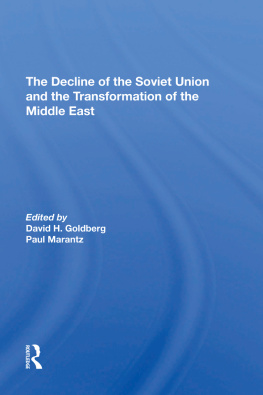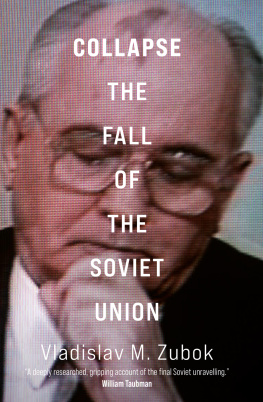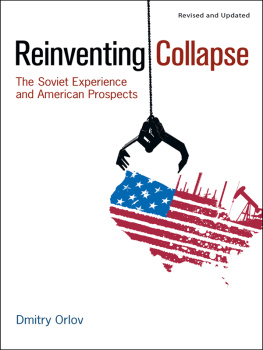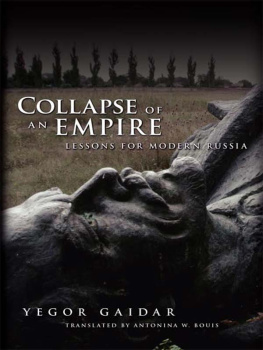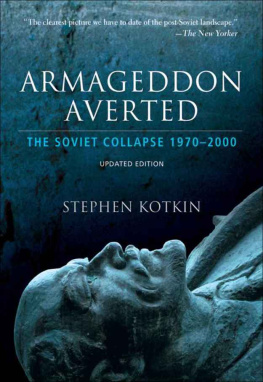First published 2004 by M.E. Sharpe
Published 2015 by Routledge
2 Park Square, Milton Park, Abingdon, Oxon OX14 4RN
711 Third Avenue, New York, NY 10017
Routledge is an imprint of the Taylor & Francis Group, an informa business
Copyright 2004, Taylor & Francis. All rights reserved.
No part of this book may be reprinted or reproduced or utilised in any form or by any electronic, mechanical, or other means, now known or hereafter invented, including photocopying and recording, or in any information storage or retrieval system, without permission in writing from the publishers.
Notices
No responsibility is assumed by the publisher for any injury and/or damage to persons or property as a matter of products liability, negligence or otherwise, or from any use of operation of any methods, products, instructions or ideas contained in the material herein.
Practitioners and researchers must always rely on their own experience and knowledge in evaluating and using any information, methods, compounds, or experiments described herein. In using such information or methods they should be mindful of their own safety and the safety of others, including parties for whom they have a professional responsibility.
Product or corporate names may be trademarks or registered trademarks, and are used only for identification and explanation without intent to infringe.
Library of Congress Cataloging-in-Publication Data
Seliktar, Ofira.
Politics, paradigms, and intelligence failures : why so few predicted the collapse of the Soviet Union / by Ofira Seliktar.
p. cm.
Includes bibliographical references and index.
ISBN 0-7656-1464-2 (cloth : alk. paper) ISBN 0-7656-1465-0 (pbk. : alk. paper)
1. Soviet UnionPolitics and government19531985. 2. Soviet UnionPolitics and
government19851991. I. Title.
DK274.S375 2004
327.7304709048dc22
2004002477
ISBN 13: 9780765614650 (pbk)
ISBN 13: 9780765614643 (hbk)
________________________________________________________
On December 25,1991, the Soviet flag was lowered for the last time over the Kremlin, ending the longest running communist experiment in the world. The seemingly sudden collapse of the Soviet Union sent shock waves around the globe. It ended the epic struggle between East and West that fueled the Cold War and left the United States as the only superpower in the world.
Unlike the communist revolution in China and the fundamentalist revolution in Iran, the demise of the Soviet empire was a positive development in terms of American national security. However, Washingtons failure to foresee the events in Moscow ranks high in the pantheon of predictive failures. Indeed, this failure has been a subject of a long, passionate, and multidimensional debate. Complicating the debate are two factors. First, the collapse of the Soviet Union followed a long crisis of legitimacy, a process that has been hard to conceptualize, let alone measure. Second, the question of who got it right or wrong has been intertwined with the deeper issue of who won the Cold War. Like the inverse but methodologically similar disputes over who lost China and Iran, this debate has been fought along ideological and partisan lines, with conservatives claming credit for devising policies that toppled the Soviet regime and liberals arguing that the United States had no input into the collapse. The intelligence community has been criticized most harshly, but the predictive debacle has also shaken Sovietology, with the discipline dissolving in a round of acrimonious post-mortems and finger pointing.
This passionate discourse has generated a voluminous literature, most of which deals with relatively narrow segments of the process that informed American views of the changing realities in the Soviet Union. By far, the largest volume of writings has been generated by a discussion of the role of academic Sovietology in the predictive debacle, followed by that of the intelligence and foreign policy communities. However, there has been little effort to provide an integrative and time-line-based analysis that focuses on the complex ways in which legitimacy-driven political change in the Soviet Union was conceptualized by American political science, applied to Washingtons foreign policy, and used in the predictive endeavor.
This book hopes to contribute to such an understanding by offering the first systematic analysis of the predictive failure at the paradigmatic, foreign policy, and intelligence levels. The theoretical part of the book discusses the social science paradigms that were instrumental in determining how Sovietology viewed political change in the Soviet Union. The applied section of the book is composed of two sequential analyses. The first part illustrates how these paradigmatic assumptions had influenced the U.S. approach to predicting and managing political change in the Soviet Union. Revisionist views, fortified by the pluralist model, comparative politics, and other vogues in political science, informed the Carter administrations liberal vision of a New Internationalist partnership with the Soviet Union. The totalitarian approach, fortified by conservative and neoconservative thinking, was behind the Reagan administrations crusade to vanquish communism. The second part describes how the Reagan challenge exacerbated the crisis of legitimacy in the Soviet Union and influenced the efforts of Mikhail Gorbachev to revamp the legitimizing framework of Soviet communism as a way of improving its competitive performance. Each of the chapters in this section is based on a chronological-thematic analysis of the developments in the Soviet Union, the politics of the predictive process in Washington, and the paradigmatic debates that shaped this process.

